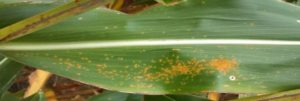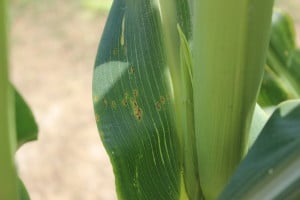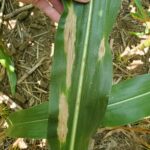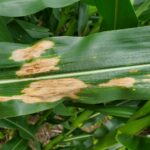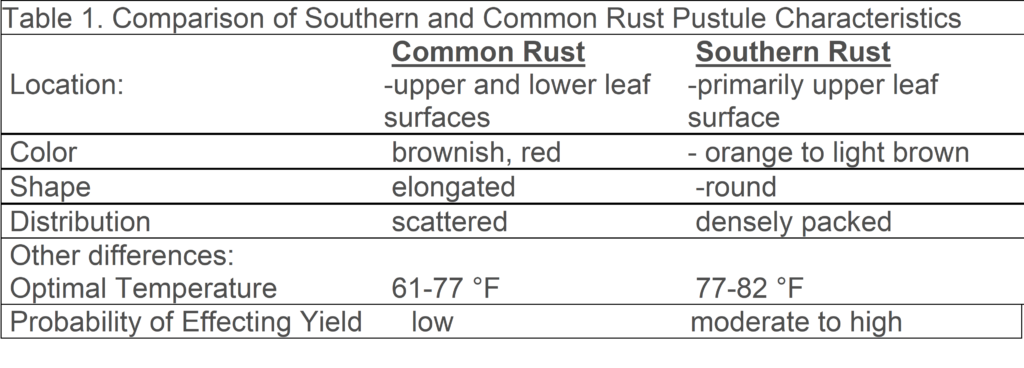While there are no confirmed reports of southern rust in Tennessee, the number of reports in MS and AR suggest it is most likely in West TN.
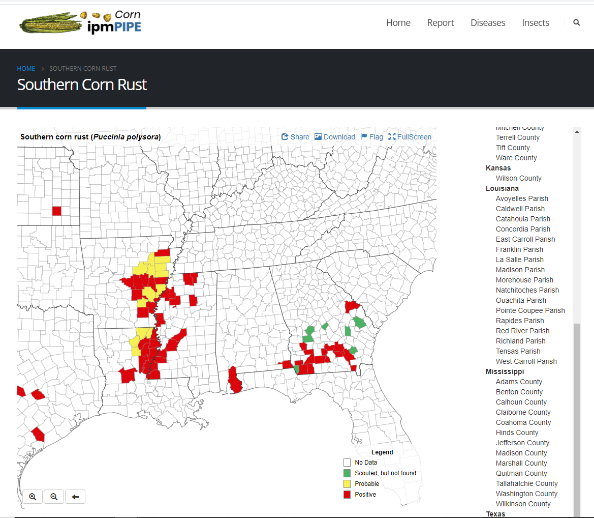
While many corn fungicide applications have already gone out at the tassel (VT) timing, when asking if a disease, such as southern rust, will cause yield loss, it depends upon multiple factors including:
- Disease presence
- Growth stage
- Weather conditions
- Cropping history/fungicide application
- Hybrid disease susceptibility
Foliar fungicide applications in corn is more likely to provide a response in yield when disease is present or there is significant risk of disease, weather conditions favor disease development, the field is corn after corn, and a disease susceptible hybrid is planted. Research data from University of Tennessee and other universities has continuously found these factors to strongly influence the magnitude and consistency of yield response to a foliar fungicide application in corn.
Major corn diseases are favored by humid conditions, so the edges of fields will not be the place to scout. Within fields, especially low spots that hold moisture are good areas to scout for disease as it may develop in those areas first. Be on the lookout for lesions and use the resources on UTcrops.com and particularly under Corn Diseases in the photo gallery (Corn Diseases in Tennessee) which contains disease images and weather conditions that favor disease development. For you tweeters out there, tweet a picture of any corn diseases you’re seeing, the disease name, and county and state to @corndisease.
One of the most common foliar corn diseases in Tennessee is gray leaf spot (caused by a fungus – Cercospora zea-maydis), especially in continuous corn fields (see Images 1 and 2). Lesions begin on lower leaves in the canopy, as small spot, but as they develop they elongate and turn into long, rectangular lesions.
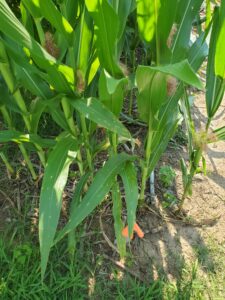
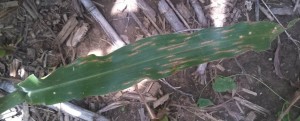
Other diseases that have been noted in Tennessee fields this season include Physoderma brown spot (Image 3) and Diplodia leaf streak (Image 4). Both of these disease symptoms on the leaf are not reported to cause disease loss, but the pathogens that cause them could potentially cause stalk rot and/or ear rot. As the pathogens that cause Diplodia leaf streak are one of two pathogens that cause stalk rot or the other ear rot; and the pathogen causing Physoderma brown spot is able to cause stalk rot. Although just seeing the leaf symptoms does not mean ear rot or stalk rot will follow, in fact the years I have seen Diplodia leaf streak and Physoderma brown spot in my research plots, I have not seen the ear rot or stalk rot develop. Although every hybrid could respond differently.
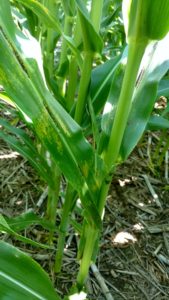
While southern corn rust is the one of the most damaging diseases, be sure it is correctly identified and not confused with common rust. The characteristics that differ between the rusts are the location, color, shape, and distribution of pustules (see Table 1 and images 5 and 6). When in doubt don’t hesitate to contact your local county agent or specialist for advice on disease management and identification.
Southern rust has not been reported in TN, but has in AL, AK, GA, KS, LA, MS, and TX. Visit https://corn.ipmpipe.org/southerncornrust/ to see the latest on where southern rust has been reported.
